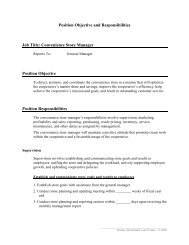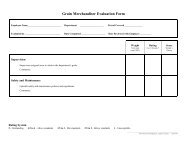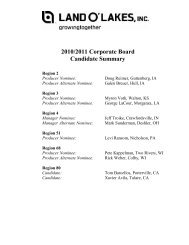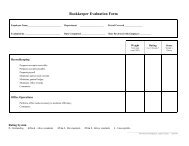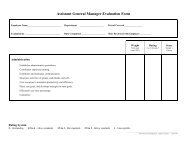2011 March/April Issue - Land O'Lakes Inc.
2011 March/April Issue - Land O'Lakes Inc.
2011 March/April Issue - Land O'Lakes Inc.
- No tags were found...
You also want an ePaper? Increase the reach of your titles
YUMPU automatically turns print PDFs into web optimized ePapers that Google loves.
ECONOMIC OUTLOOK by Tom WegnerA Look at Dairy PricesFundamental market factors drive prices in <strong>2011</strong>Economists often look to fundamentalmarket factors when explainingor projecting prices. Fundamentalfactors impacting farm milkprices include weather, number of milkcows, cow productivity and stocks of dairyproducts. Occasionally, these fundamentalfactors line up in a nice way, allowingeconomists and market participants toclearly explain and even project futureprice movements.For example, most analysts attributethe record milk prices experienced in2007-08 to the poor weather conditions inNew Zealand, which reduced the supply ofmilk for exports. Thus, the available milksupply residing on the U.S. market got bidup and effectively allocated dairy productsamong global customers.In the corn market, fundamental factorshave strengthened prices to unprecedentedlevels; a smaller than predictedU.S. crop and low carryover stocks, coupledwith strong demand from both exportcustomers and ethanol plants, has liftedprices to levels well in excess of $7 perbushel. Economists with the Universityof Illinois have developed price scenariosfor next year that rely heavily on assumptionsabout U.S. weather. Their analysisconcludes that under a poor weather scenario,corn prices could average as high as$7 per bushel, while under a good weatherscenario, prices would still average $4.75per bushel. These estimates do not takeinto account the most current reports ofhistorically low levels of corn carryover. Bycomparison, USDA has conservatively estimatedthe corn price will average $5.40per bushel, and the Food and AgriculturalPolicy Research Institute (FAPRI) at theUniversity of Missouri, a major sourceof market analysis for the U.S. Congress,projects a corn price of $5.03 per bushel.Clearly, weather, and its accompanyingimpacts on acreage planted and yield, representsthe major fundamental factor influencingU.S. corn prices in <strong>2011</strong>-12.Turning to the dairy markets, the key fundamentalin 2010 was increased internationaldemand, which pulled U.S. dairyproduct prices above 2009 levels andraised farm milk prices above $16. In <strong>2011</strong>,USDA projects farm milk prices to top $18as international demand continues to drivedairy prices; the FAPRI projects milk pricesslightly lower at $17.79.Most analysts agree that the large volumeof U.S. cheese stocks do not line upneatly with the current price levels. Cheesestocks have exceeded 1 billion pounds everymonth since <strong>March</strong> 2010, leading to concernsabout cheese prices weakening in thecoming months as the U.S. approaches theseasonal production flush. Recent futuresseem to reflect this concern.Perhaps the factors underlying the impactof cheese stocks on prices are changing.One of the more difficult aspects of projectingprices is identifying such changesin fundamental factors. For example, thepopularity of pizza in U.S. diets significantlyaltered (for the better) the demandfor cheese. Similarly, the entrance of mega-sizedcheese plants (think Southwestand Hilmar cheese plants processing morethan 5 million pounds of cheese each day),combined with an ever-increasing level ofprice volatility, may have resulted in a desireby customers, suppliers and processorsto hold a larger level of inventory. Inshort, supply chain participants may havebeen consciously choosing to hold more inventory,and that 1 billion pounds of cheesein stocks may not be excessive consideringtoday’s price and processing environment.In summary, fundamental factors supportstrong milk prices and even stronger cornprices for <strong>2011</strong>. Livestock producers – especiallydairy producers – need to proactivelytake steps to minimize their exposure to therisk that these two ever-heating markets puton their milk margins over feed costs. ■Tom is the director of Economics and DairyPolicy for <strong>Land</strong> O’Lakes, <strong>Inc</strong>. He has beenwith the cooperative since 2005 and holdsa master’s degree in applied economics.Tom is based in Arden Hills, Minn.www.landolakesinc.com MARCH/APRIL <strong>2011</strong> 17




